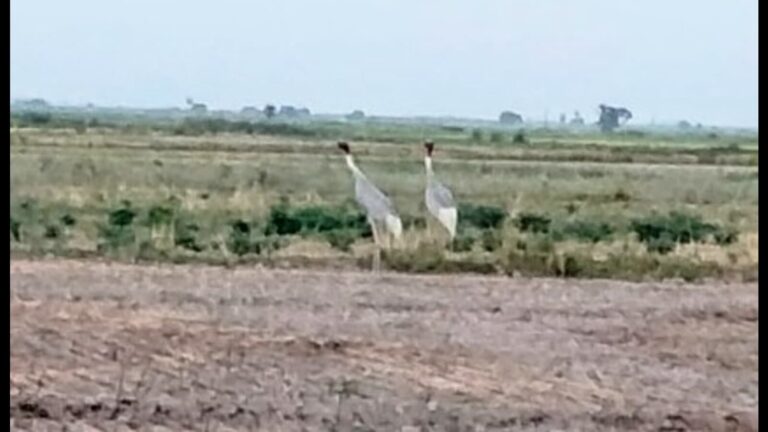The population of sarus crane, which was declared the state bird of Uttar Pradesh in July 2015, has been on the rise and the trend is expected to continue this year too, officials said after the first round of a two-day sarus crane population survey that ended on Friday.
According to a forest department survey, the sarus crane population is projected to be 17,329 in 2021, 19,188 in 2022 and 19,522 in 2023, and this trend is expected to continue this year as well.
“It is true that we expect the sarus crane population to increase this year as well,” the official said, but added that the final figure could not be reflected as the second phase of the survey was still underway.
UP’s Chief Conservator of Forests Sanjay Shrivastav said, “We conducted the first phase of counting on June 20 and 21 in bird sanctuaries and forest areas frequented by these birds. The count was recorded twice a day, in the morning and evening. Now, the second phase will begin with ground troops of forest rangers and forest officials. Forest officials will also take reports of monkey sightings from the public.”
“This process will take time as all the data has to be collected from different districts and ranges. Hence, it may take a few more days for the figures to be released,” he said.
Developments in western Uttar Pradesh are showing encouraging signs.
Officials confirmed that Meerut and Bijanor forest divisions recorded a slight increase in the bird population.
In Meerut, 47 adult cranes and four small cranes were counted in Maripur area of Bikundu marsh, Draupdi Ghat and Sikanderpur forest area of Hastinapur forest range during the survey, while 146 adult and small cranes were spotted in Bijanor division, officials said.
These survey figures indicate an increase in the Sarus Crane population in Meerut forest division by six birds since the last survey in June 2023 and an addition of seven new birds in Bijarnoor forest division since the last survey in December 2023.
Deputy Director General of Forests, Bijnor, Gyan Singh said as many as 53 cranes have been spotted in Amangarh area, 37 in Nagina forest area, 20 in Bijnor and Dampur, 11 in Najibabad and five in Chandpur.Forest department officials, volunteers from WWF India, NGOs and educational institutions are taking part in the survey.
About SARUS
*Adult Sarus Cranes have grey feathers and bodies with red heads and necks.
*The beak is sharp, long and green and there is no difference in colour between males and females, although the male’s beak is usually larger than the female’s.
*The red color of the male’s head and neck becomes more vivid during the breeding season. Young Sarus Cranes are brown in color, which changes with age. Juveniles have a yellow underside of their beak and a brown head covered with feathers.

